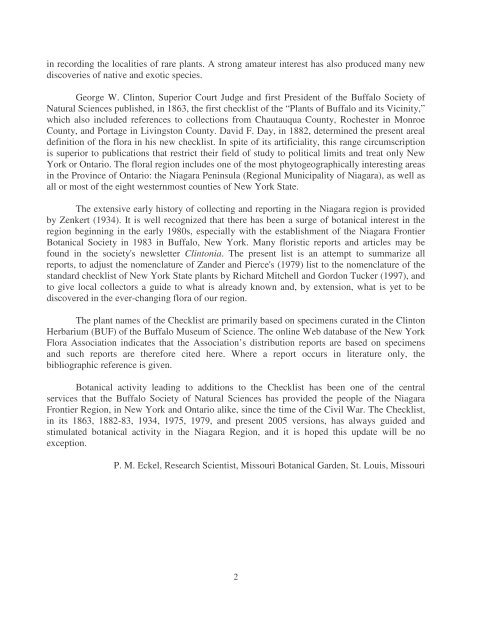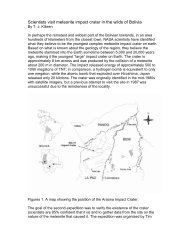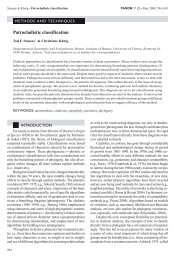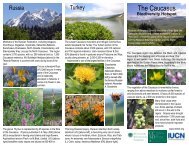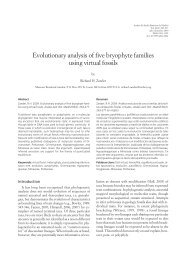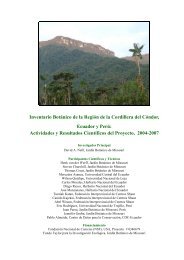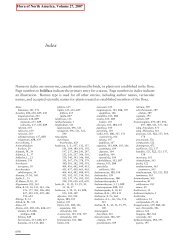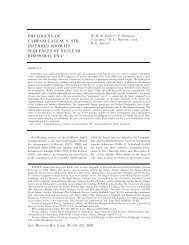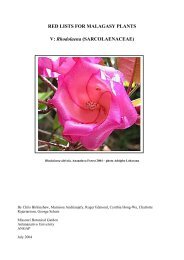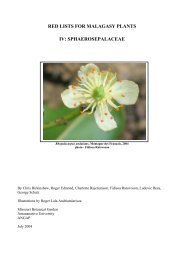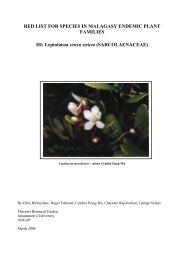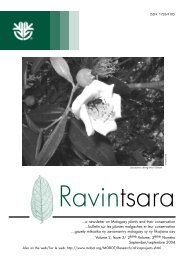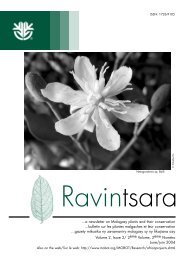MADCapHorse - Missouri Botanical Garden
MADCapHorse - Missouri Botanical Garden
MADCapHorse - Missouri Botanical Garden
Create successful ePaper yourself
Turn your PDF publications into a flip-book with our unique Google optimized e-Paper software.
in recording the localities of rare plants. A strong amateur interest has also produced many new<br />
discoveries of native and exotic species.<br />
George W. Clinton, Superior Court Judge and first President of the Buffalo Society of<br />
Natural Sciences published, in 1863, the first checklist of the “Plants of Buffalo and its Vicinity,”<br />
which also included references to collections from Chautauqua County, Rochester in Monroe<br />
County, and Portage in Livingston County. David F. Day, in 1882, determined the present areal<br />
definition of the flora in his new checklist. In spite of its artificiality, this range circumscription<br />
is superior to publications that restrict their field of study to political limits and treat only New<br />
York or Ontario. The floral region includes one of the most phytogeographically interesting areas<br />
in the Province of Ontario: the Niagara Peninsula (Regional Municipality of Niagara), as well as<br />
all or most of the eight westernmost counties of New York State.<br />
The extensive early history of collecting and reporting in the Niagara region is provided<br />
by Zenkert (1934). It is well recognized that there has been a surge of botanical interest in the<br />
region beginning in the early 1980s, especially with the establishment of the Niagara Frontier<br />
<strong>Botanical</strong> Society in 1983 in Buffalo, New York. Many floristic reports and articles may be<br />
found in the society's newsletter Clintonia. The present list is an attempt to summarize all<br />
reports, to adjust the nomenclature of Zander and Pierce's (1979) list to the nomenclature of the<br />
standard checklist of New York State plants by Richard Mitchell and Gordon Tucker (1997), and<br />
to give local collectors a guide to what is already known and, by extension, what is yet to be<br />
discovered in the ever-changing flora of our region.<br />
The plant names of the Checklist are primarily based on specimens curated in the Clinton<br />
Herbarium (BUF) of the Buffalo Museum of Science. The online Web database of the New York<br />
Flora Association indicates that the Association’s distribution reports are based on specimens<br />
and such reports are therefore cited here. Where a report occurs in literature only, the<br />
bibliographic reference is given.<br />
<strong>Botanical</strong> activity leading to additions to the Checklist has been one of the central<br />
services that the Buffalo Society of Natural Sciences has provided the people of the Niagara<br />
Frontier Region, in New York and Ontario alike, since the time of the Civil War. The Checklist,<br />
in its 1863, 1882-83, 1934, 1975, 1979, and present 2005 versions, has always guided and<br />
stimulated botanical activity in the Niagara Region, and it is hoped this update will be no<br />
exception.<br />
P. M. Eckel, Research Scientist, <strong>Missouri</strong> <strong>Botanical</strong> <strong>Garden</strong>, St. Louis, <strong>Missouri</strong><br />
2


